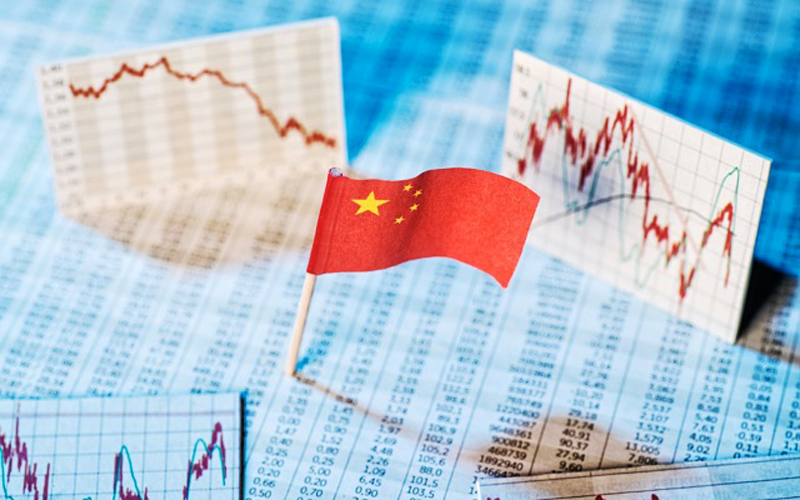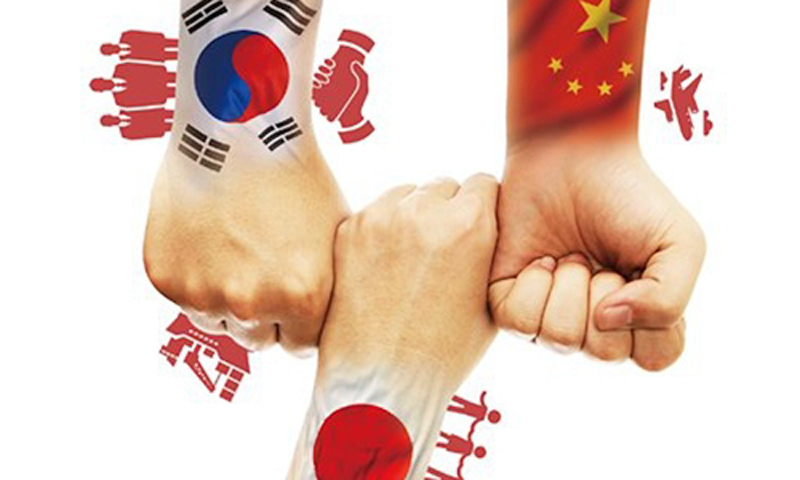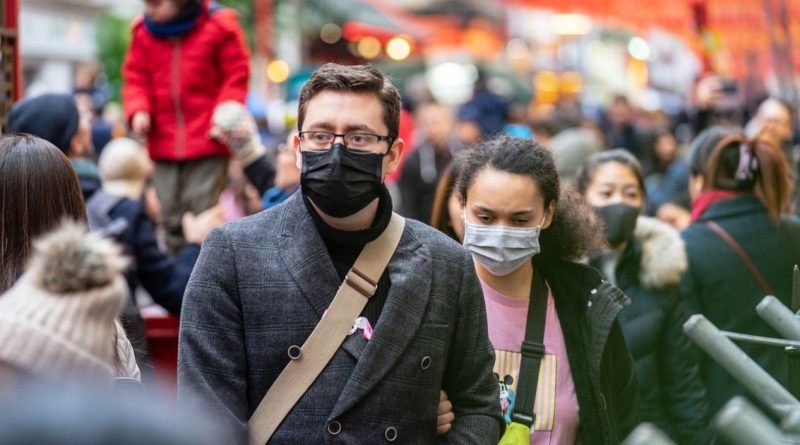Chinese Economy on COVID-19 impact: Challenges and Solutions
Information
The global pandemic has abruptly halted almost all human activity and subsequently created serious challenges to the revival of economy. On April 29, CDI organized an online meeting where academics around the country debated possible solutions to this puzzle.
Date: April 29, 2020
Host: CDI
Theme: Chinese Economy on COVID-19 impact: Challenges and Solutions
The post Covid-19 World will be more or less globalized?
Information
Prof. Fan Gang, President of CDI, held a discussion with Michele Geraci, former Under-Secretary of State for the Italian Ministry of Economic Development on “the post Covid-19 World will be more or less globalized”. The two economists shared their analyses about the post Coronavirus outbreak with particular attention towards the forces that will push the World into a new economic equilibrium. They provided insights and arguments from the European and Chinese points of view on the geo-economic balance that is likely to arise after the crisis.
Date: April 23, 2020
Host: CDI and The European House – Ambrosetti
Theme: The post Covid-19 World will be more or less globalized?
Battle against COVID, an opportunity for China, Japan and South Korea to build joint mechanism
Author:Fu, Yongjia, Postdoctoral Research Fellow, China Development Institute
Editor’s Note:Confronting the deadliest virus in a century, China, Japan and South Korea demonstrated remarkable solidarity. The three nations in East Asia are giving helping hands to each other in hard times. In early February, when China’s confirmed cases were climbing, Japan and South Korea provided China with urgently needed protective gears, though they also face the danger of domestic transmission.
Now, when COVID cases are subsiding in the East Asia continent, China has been ramping up efforts to support Japan and South Korea and sending them medical supplies in large quantities. In an era where trust between major countries is running low, such mutual help and aids in combating COVID-19 is an uplifting sign that China, Japan and South Korea could upgrade their cooperation on health issues to a new level.
First, peoples in the three countries share a common cultural heritage and tend to sympathise with each other in the face of natural disasters. Recently, aid workers in the three countries printed classical verses from The Book of Odes (China, 1046-700 BCE), poems composed by Prince Nagaya (Japan, 685-729 CE) and Choe Chiwon (Korea, 857 CE) on packages of medical supplies as a unique way of expressing solidarity. Looking back at history, we can see the three nations had also proactively come to each other’s help during massive disasters such as the 2008 Sichuan earthquake and the 2011 Tohoku earthquake and tsunami. Warm memories like these provide an optimal starting point to pool the three countries’ resources toward disease prevention.
Second, China, Japan and South Korea’s respective responses to the pandemic bear similarities, which is conducive to a consensus on how to deal with a large-scale health emergency. In fighting COVID, the Chinese government showed strong determination, carried out the lockdown, reversed the trend, stopped the contagion and restarted the economy. Meanwhile, with mass testing, the use of big data and contact-tracing technology, South Korea implemented a nuanced approach that flattens the curve without shutting down the entire economy. On the other hand, Japan has been exploring a softer approach and trying to keep COVID’s disturbance to the national economy to the minimum. Despite their differences, China’s ‘hard’ solution, Japan’s ‘soft’ approach and Korea’s ‘middle way’ are all based on effective leadership of the government, the values of collectivism and the proper state intervention. These shared traits of the three nations’ responses to the coronavirus could facilitate their collective actions to tackle infectious diseases.
Third, the close economic ties and frequent movement of people between the three countries makes joint mechanism against infectious diseases an absolute necessity. In 2019, China was the biggest trading partner of both Japan and South Korea; while Japan and South Korea were China’s 2nd and 3rd largest trading partner, respectively. China is also South Korea’s biggest export market and its largest origin of imports. As of 2018, Japan remains the largest cumulative investor in China, with US$ 112 billion in investments. Chinese visitors to Japan increased tenfold in the recent ten years, reaching 9.59 million in 2019. Similarly, Chinese visitors to South Korea numbered 8.07 million in 2016. According to the statistics of the Embassy of Japan in China, about 140,000 Japanese citizens live in China, while the number of Chinese citizens residing in Japan amounts to 674,000.
To sum up, China, Japan and South Korea have a shared destiny in the face of contagious diseases. The three countries are so near to each other, their economies are so intertwined, and travellers between them are so numerous, that a disease outbreak in one country will quickly spread to the other two nations. The SARS in 2003 was the first strain of coronavirus posing a threat to entire East Asia. Later, in May 2015, only eight days after Korea reported to the WHO the first domestically confirmed case of MERS, China had seen the first imported case, which incurred as many as a hundred contacts. Although MERS did not spread widely in Japan and China, it did show the weakness in the disease prevention system in East Asia. The current COVID crisis should serve as a ‘wake-up call’ that the three countries should join together to fight the virus and build a joint mechanism to tackle future epidemics:
- China should continue to ramp up its support to Japan and South Korea to stop the pandemic in East Asia. Although China had contained COVID’s spread within its boundary, its national safety will be under continuous threat so long as Japan and South Korea are troubled by the coronavirus crisis. The wisest strategy for China is to aid the two neighbours and make East Asia free of COVID as soon as possible. Therefore, China should provide more protective gears and medical supplies to Japan and South Korea, send experts and volunteer teams to the affected areas and provide infrastructural support should it be convenient.
- The three countries could explore new ways to resume international travel between them. The pandemic had locked borders and crippled international travel. The reopening of the closed borders still poses hard challenges for most countries. In light of this, the immigration departments of the three countries should carry out joint inspections at each other’s border, stopping high-risk persons from boarding planes and ships. Moreover, the three countries could share their screening and testing results, create ‘health passports’ for international travellers. By using smartphone apps and Bluetooth technology, the three nations could offer travellers an option to isolate themselves at their own homes before travel, which significantly reduces the cost of mass quarantine.
- China, Japan and South Korea should build a long-term joint mechanism to deal with future outbreaks of contagious diseases. They should make full use of the goodwill accumulated in fighting COVID and turn the temporary measures during the crisis into long-term institutions. For example, the three parties could maintain a permanent green channel for crucial medical supplies. To ensure swift and proper treatment of each other’s citizens, governments should also negotiate the mutual recognition of medical insurance regarding epidemics. Last but not least, the three countries should take collective actions to secure the supply chain in East Asia, relieve the tax burden of companies and protect the industries of the region from future disasters.
China’s economic recovery from COVID-19 will be slower than it was for SARS
Contributor: Fan Gang, President of CDI,Yuwa Hedrick-Wong, Chief Economics Commentator, Forbes Asia
Editor’s Note: China’s economic recovery will be unlike the V-shaped rebound from the SARS outbreak in 2003. The structure of the Chinese economy today is very different from 2003, and China will also face global headwinds as the economies in North America and Europe are slowing down because of COVID-19. Expect a more gradual recovery.
Since the SARS outbreak in 2003, China’s economic structure has become more domestic consumption-led in an expanding service sector, and less dependent on infrastructure investment and manufacturing. It is ironic that this positive development is a key reason why the Chinese economy is hit harder this time by COVID-19 than it was by SARS. An epidemic’s economic impact stems from the need to isolate people, which instantly restricts their movement, hence their ability, let alone desire, to spend in terms of entertainment, shopping, travel, socializing, and so on. In 2003, investment counted for about 55% of China’s GDP, and with investment/construction projects having kept going, economic growth continued and the recovery was very quick. Although the GDP growth rate was down by about 5% in the second quarter, the annual growth of 2003 still ended up higher than 2002 by 1%. In contrast, investment in 2019 accounted for less than 40% of GDP, while consumption had risen to 60%. Corresponding to the rise of the weight of consumption in the economy is the expansion of the service sector, which now account for 54% of GDP. In a recovery from an epidemic like COVID-19, restarting activities in private consumption is much slower than restarting investment and manufacturing. This is indeed corroborated by a slower “restart ratio” in consumption and services compared with the “restart ratio” in investment and manufacturing. As a result, the preponderance of consumption and services in the Chinese economy today means that we will not see a sharp V-shaped recovery from COVID-19 as in 2003 as illustrated below.
Furthermore, COVID-19 is a much trickier virus because it can be spread by people who are showing no symptoms at all. It therefore requires longer periods of quarantine and social distancing, which in turn makes the restart of economic activities even slower compared with SARS. The speed and extent to which COVID-19 became global is yet another key difference with SARS. Even as the Chinese economy is returning to normal, Chinese companies have to prepare for a “second wave” of breakdowns of their global supply chains due to the shutdown of foreign factories and international transportation. At the same time, China has to tackle “imported infections” as thousands of Chinese nationals are returning home to “safe-heaven” to escape COVID-19 that is raging in other countries.
It would come as no surprise to see China’s GDP growth rate for the first two quarters of this year down to a very low range of 2% to 3% year-over-year. In the second half of 2020, recovery will gear up, partially thanks to the timely fiscal stimulus and monetary support announced by the government. However, for reasons mentioned above, and given the unfavorable global economic and financial conditions, it is highly unlikely that growth in the second half of the year could be sufficient to bring the full year of GDP growth back to a “normal” level of 6%. Don’t expect a V-shaped recovery like in 2003.
Key policy for dealing with COVID-19 is to stimulate immunity of market players

Author: Liu Guohong, Director of Department of Finance Industry
Editor’s Note: COVID-19, ran rampant during China’s Spring Festival. Currently, as the epidemic has been gradually brought under control and remains stable, we need to be alerted to inappropriate response by government departments at different levels, such as frequently rolling out economic policies or extending them to an undue degree, as they may lead to elevated local debt levels, inflation and even economic stagflation. Policies aimed to deal with the epidemic should stabilize market expectations and maintain market ecology, and not swing from side to side. It is important to reinvigorate the market and protect its fundamental mechanisms from harm, instead of taking over everything.
From the demand side, the epidemic coincides with the Spring Festival holiday. Consumption including catering, accommodation, tourism and entertainment has almost dried up. By far, we still cannot estimate how long consumption will remain stagnant, as this depends on the duration of the epidemic. The current complexities in international economy and trade make it difficult to rely on external market for rapid compensation of demand.
From the supply side, the lockdown of cities and roads and the suspension of work in response to the epidemic have resulted in a large number of stranded workers, short supply of production materials and shrinking sales of enterprises, threatening the survival of many small, medium and micro enterprises, while further impelling the shift of the global supply chain out of China since the onset of Sino-U.S. trade frictions in 2018. As they help businesses survive and address human resource issues, government departments shall also closely watch for the potential de-linking of domestic and global sectors, including economy and trade, science and technology and other fields of international exchanges, as well as the resulting cyclical collapse of profit-making capacity.
Given the huge and complicated impact of COVID-19 on the economy, the society expects strong stimulus from the government. However, China’s current debt rate is already elevated, withinflation rate approaching a ten-year high, squeezing the space for fiscal and monetary policies. No government in the world has ever managed to rely on strong stimulus policies to achieve sustainable economic development.
In face of the huge impact of the epidemic, what is most needed is common sense and a rational response with targeted, forward-looking and substantive policies:
- Adhere to stable money supply and respond to inflation expectations in advance; guard against increasingly visible potential inflation expectations that may be caused by the epidemic, ensure proper quantity of money supply with good rhythm, maintain reasonable and sufficient liquidity, and keep market interest rates at proper levels, in a bid to create a stable and predictable monetary and financial environment for both epidemic control and production resumption.
- Lower the statutory deposit reserve ratio in an orderly fashion, release more low-cost funds, reduce the capital cost of financial institutions and improve their balance sheets. Financial institutions will need to deliver reduced capital cost to the real economy and provide feedback on market capitalto regulatory authorities.
- Deepen supply-side financial reform, further open up the financial sector, accelerate market-oriented development of financial institutions, and make financial institutions more sensitive to interest rate, monetary policy signals, market opportunities and economic conditions.
- Priority should be given to ensuring special emergency assistance to directly deal with the impact of the epidemic; ensure that enterprises and industries could safely survive the period of stagnation during the epidemic.
- Increase the scale of special bonds issued by local governments and promote the marketization and transparency of local bonds; moderately expand the scale of special bonds of local governments, strengthen the information disclosure of local bonds, and lower the threshold for local bond investment with improved protection mechanism for investors; encourage and guide local governments to issue bonds in a reasonable way based on market feedback, and improve the quality of investment for post-epidemic economic revival.
- Give full play to the role of professional financial institutions, and capitalize on existing special funds to identify creative investment opportunities engendered by the epidemic, and provide support in a safe and efficient manner.
- Local governments should reasonably introduce economic policies according to the epidemic situation and their own fiscal and taxation realities;they should not blindly subsidize or issue debts in order to overtake competitors, nor should they interfere with market price signals in any irresponsible way or force non-governmental investment out of market.
At present, what is urgently required in dealing with the COVID-19 epidemic is to adopt reasonable and stable policies, mobilize individual wisdom, stimulate market power, and build a more reliable global innovation chain, industrial chain and value chain.
What challenges and changes does COVID-19 mean for china’s urbanization

Author: Cao Zhongxiong, Executive Director of New Economy Research Department of CDI
Editor’s Note:The “black swan” incident of the COVID-19 outbreak has led to the temporary shutdown of the global supply chain, making China the “gray rhino” in the world economy. To be sure, COVID-19 will not impede the process of China’s economic transformation and urbanization, but will change their development path.
The spread of the epidemic was accelerated by intense population flow, which is the characteristic of China’s “semi-urbanization”. Semi-urbanization is an incomplete state in the process of transforming rural population into urban population. This is manifested in the fact that farmers have left the countryside to work and live in cities, but cannot enjoy the same treatment as urban residents in many aspects such as labor remuneration, children’s education, social security, and housing, etc. They do not have political rights such as the right to vote and stand for election in cities, and cannot really assimilate into the urban society.
At present, some unilaterally attribute the impact of the epidemic to unconventional urbanization. This view is questionable as I see it, and should be re-examined from a deeper perspective. The spread of the epidemic in cities is not caused by urbanization per se, but by insufficient urbanization and structural problems in the urbanization process, which can be more appropriately termed “semi-urbanization”. The COVID-19 epidemic is estimated to have a profound impact on China’s urbanization. The shortage of public services, imperfections in urban governance and the lack of emergency supplies are closely related to the current state of semi-urbanization. These problems have driven the spread of the epidemic.
During the epidemic, non-natives became hidden hazards. Huge flow of people leaving and returning to cities have brought tremendous challenges to social governance. Especially when work and production is about to be resumed, the health screening, the tracking of suspected cases, and service for those in quarantine all bring pressure to social governance. The root of the huge population flow also lies in China’s traditional household registration system. To emerge from the semi-urbanization state, it is necessary to further step up reform of the household registration system, facilitate the movement of people to mega-cities, large cities and surrounding second-and third-tier cities, so as to allow them to settle and flow within city clusters. In this way, people will be able to assume a “fixed identity” in addition to their physical presence in cities, thus realizing the urbanization of people.
The epidemic requires us to reflect on urban planning. In the planning and development of cities, more small and medium-sized industrial communities are needed, with improved integration between industries and city functions, so as to reduce the ineffective flow between different urban areas. For epidemic prevention, control and follow-up measures, this will make it easier to take differentiated measures in different city areas, and resume work and production accordingly, so as to minimize the impact of the epidemic on the city.
What has happened in this epidemic points to the notion that first-class city clusters are the future of China’s development. Of course, in the future, challenges faced by the development of city clusters will come more from the coordination between regions and between cities, the integration of industrial chains, and the supply of high-quality public services required by high-intensity population flow. Only on a larger scale can we provide public services of higher quality.
Impact of the COVID-19 epidemic on china’s economy and industrial response

Author: Cao Zhongxiong, Executive Director of New Economy Research Department of CDI
Editor’s note: The impact of this epidemic on the economy can be felt in both short and long terms. In the short term, the economy will be hit hard. In the long run, the epidemic will definitely have a profound impact on China’s industries.
In the short term, consumption, infrastructure and labor-intensive industries will suffer a greater blow. The impact on retail businesses such as shopping centers, wholesale markets and hotels is disastrous. Infrastructure construction, real estate development, and labor-intensive industries, such as textile and clothing among other traditional industries, have been hit hard. Many industries have been temporarily shut down. When it comes to high-tech industries, PCB circuit board manufacturers and mobile phone assembly plants, among other labor-intensive enterprises in the field of electronic information, are greatly affected.
Moreover, it is also a hard time for small and medium-sized start-ups, which are less resilient against risks. Declining sales, rising labor costs and high uncertainties have exacerbated difficulties in their operation. If one enterprise has an epidemic situation, its staff will be quarantined and production halted, which means it will be practically out of business. In particular, start-ups are burdened by rent and wages in an overall hostile financing environment. Many start-ups, which are not able to profit, face mounting pressure of survival in this time of extraordinary hardship.
It is important that the government readjust its economic policy, industrial policy and tax policy as soon as possible and make policy arrangements during the epidemic. While controlling the epidemic, the government shall also introduce new economic control policies, such as increasing tax relief, lowering or deferring social insurance payments, and providing subsidies for key industries, so as to ease the difficulties of enterprises. It is also important that enterprises adjust their production plans and formulate work-from-home measures as soon as possible to minimize adverse effects, and be ready to resume production after the epidemic is over and make up for production delayed by the epidemic.
In the long run, the epidemic will definitely have a profound impact on China’s industries. The health industry has always been a key area for consumption upgrading. After this epidemic, the public awareness of health will be further enhanced. Health protection, medical care and sports will embrace further opportunities of development. People’s health awareness will extend from the demand for masks to other fields.
During this epidemic, e-commerce and Internet companies have played a role in epidemic prevention while providing convenience for people’s daily life. Life-related e-commerce companies have served as a channel for providing daily necessities for people staying at home. In the future, with the development of 5G infrastructure, Internet-related industries will once again usher in a golden period of development. The reorganization of the Internet no longer means simply more economy of scale, but a further reconstruction of non-Internet fields, a deep integration with hardware and the incorporation of hardware into services.
In first-tier and second-tier cities, to cope with labor shortage and ensure production during the epidemic, enterprises will use more machines to replace people, as a number of unmanned factories and workshops continue to emerge. Intelligent manufacturing will further strengthen China’s “world factory” status.
Global enterprises, especially multinationals, will further examine their dependence on China’s supply chain, with industrial transfer occurring in certain industries. As multinationals represent a large proportion in China’s manufacturing sector, the epidemic, coupled with Sino-U.S. trade frictions, will compel multinational manufacturers to add new considerations into their plan to optimize their global presence.












